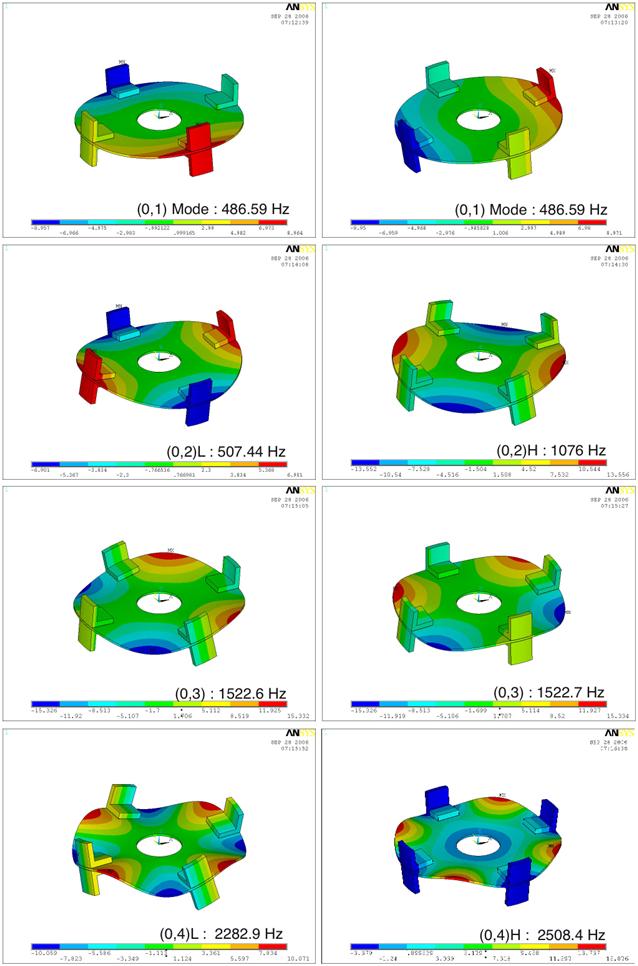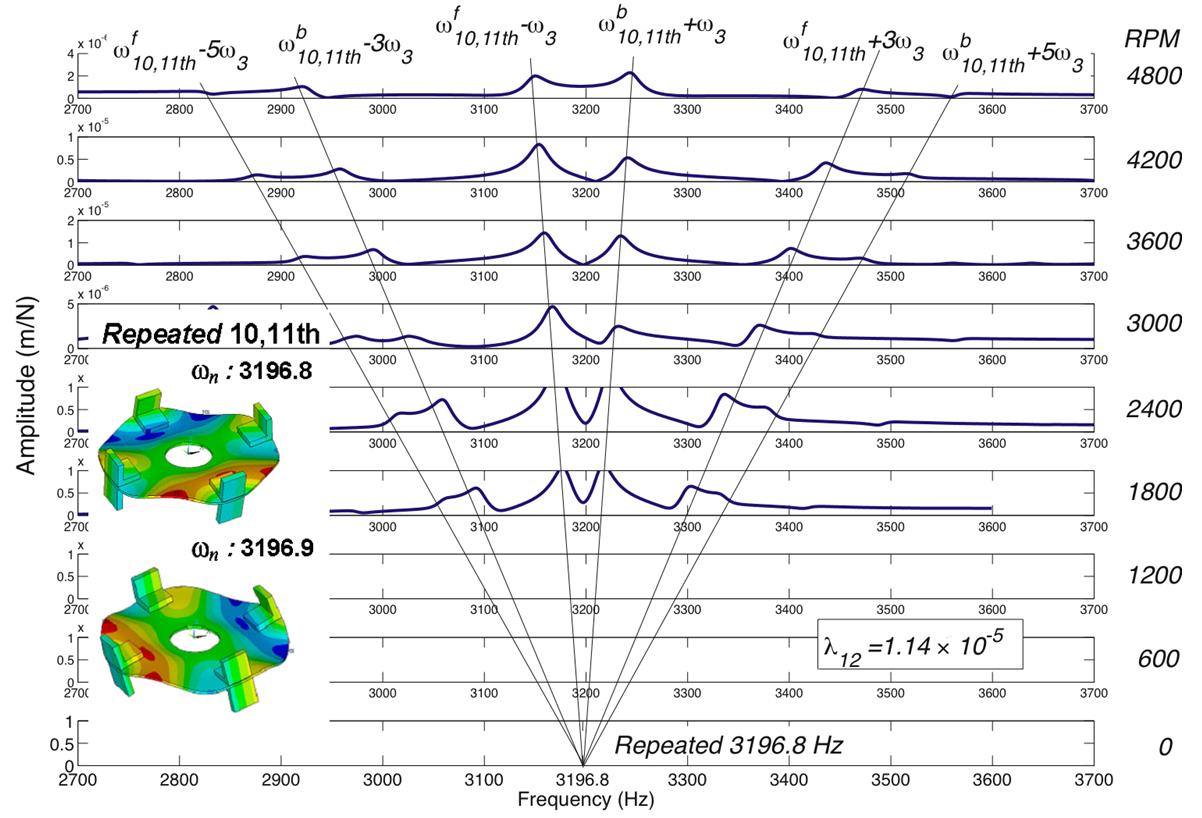Rotor dynamics is a traditional research area that lacks no unsolved difficult problems. Also, rotor dynamics is a fundamental study to many rotary machines, which appear everywhere in our daily life ranging from jet engines to refrigerator compressors.
Every rotary machine consists of three basic elements: a rotary part (rotor), a stationary part (housing), and multiple bearings that connect the rotary and stationary parts. For many rotary machines, the rotors are cyclic symmetric, i.e., the rotors consist of N identical substructures repeating themselves in the circumferential direction. Examples include bladed turbine disks and propellers.
Traditional rotor dynamics analyses focus on rotor-based formulations. Recently, rapid industrial developments demand more advanced vibration analyses that employ ground-base formulations for spinning cyclic symmetric rotors. This need manifests itself when the spinning rotor is coupled to a stationary housing via bearings. Some examples are explained as follows.
With increased material and energy costs, turbine engine industry seeks to reduce the weight and thus the rigidity of turbine engines. This results in significant vibration coupling the rotor, bearings and housing. With increased spin speed and various new applications (e.g., lift fans in Joint Strike Fighters for vertical takeoff and landing), gyroscopic effects must be accurately accounted for. With increased maintenance costs, industries seek to monitor ground-based rather than rotor-based machine response to avoid issues such as unbalance and poor reliability.
 |
Studying rotor dynamics using a ground-based formulation is by no means trivial. First, we developed a unified algorithm to predict ground-base response of spinning asymmetric rotors of arbitrary geometry. We have also extended this formulation to predict ground-base response of spinning cyclic symmetric rotors and furthermore to understand its physics. Again, our research in rotor dynamics encompasses mathematical modeling, numerical simulations, and experimental validation. We have also secured research fund from the National Science Foundation in 2003 to conduct research in this area.
Major Publications
- I. Y. Shen and Hyunchul Kim, 2006: A Linearized Theory on Ground-Based Vibration Response of Rotating Asymmetric Flexible Structures. ASME Journal of Vibration and Acoustics, Vol. 128, pp. 375-384.
- Hyunchul Kim and I. Y. Shen, 2007: Vibration of a Spinning Cyclic Symmetric Rotor. ASME Journal of Vibration and Acoustics, (in review).
- Hyunchul Kim and I. Y. Shen, 2008: Mode Evolution of Asymmetric Rotors Assembled to Flexible Bearings and Housing. ASME Journal of Vibration and Acoustics, (in review).
